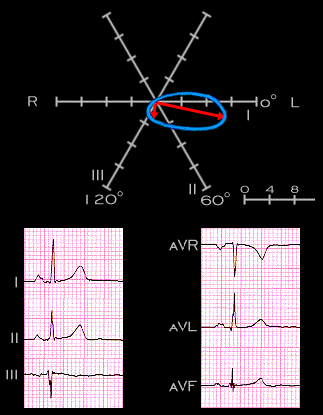
This is the same tracing that was shown on the previous page. The QRS complex has a brief, low amplitude initial component that is positive in leads III and aVF and negative in aVL. Its axis is about 100 degrees. The main QRS component is most positive in leads I and aVL and negative in leads III and aVR. It is slightly positive in aVF. Thus, its axis is about +10 to +15 degrees. There is no terminal component. These spatial vectors and the corresponding vector loop are shown here.
